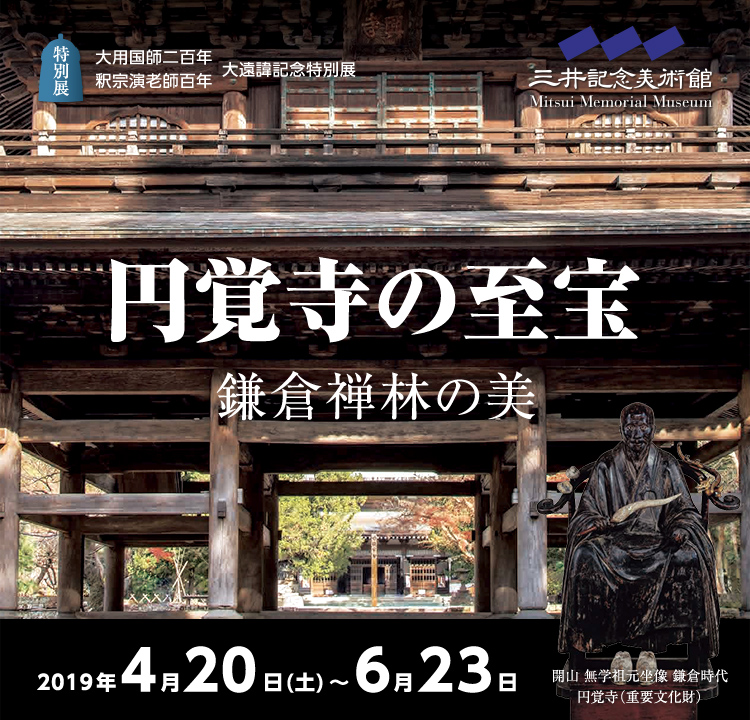It gives us great pleasure to present The Treasures of Engaku-ji: Art in Kamakura Zen Temples — A Special Exhibition Commemorating the 200th Anniversary of Daiyû Kokushi’s Death and the 100th Anniversary of Shaku Sôen’s Death, highlighting the arts of Kamakura’s Zen history. This special exhibition presents a comprehensive view of Engaku-ji’s history and culture as it commemorates the anniversaries of two head priests central to its history, namely the 200th anniversary of Daiyû Kokushi (Seisetsu Shûcho) who spearheaded Engaku-ji’s revival in the Edo period, and the 100th anniversary of Shaku Sōen who contributed to its development in the Meiji period.
Zuirokusan Engaku-ji is the head temple of the Engaku-ji school of the Rinzai sect and is located near the Kita-Kamakura station of the JR Yokosuka line, in Yamanouchi, Kamakura. The temple was founded in 1282 (Kôan 5, mid Kamakura period) when Hôjô Tokimune, the 8th regent of the Kamakura shogunate, invited the Chinese Zen priest Wuxue Zuyuan to found a new temple in Kamakura. The temple’s central worship image, Jeweled Crown Sakyamuni (Jpn: Hôkan Shaka Nyorai), a principal deity in the Kegon Sutra, is enshrined in the temple’s Butsuden hall. Engaku-ji was the first temple to be established in Kamakura representing the Kegon Zen realm that espouses the harmony between Kegon teachings and Zen. Engaku-ji is closely connected to Kenchô-ji, which was founded by the Chinese priest Lanxi Daolong upon an invitation to Kamakura by the 5th regent Hôjô Tokiyori. The two temples became the basis for Song dynasty Zen’s flourishing in Kamakura. Through their interchange with China, these temples became a central presence in the formation of Kamakura’s unique forms of religion, culture and the arts.
Engaku-ji’s founder Wuxue Zuyuan died in 1286 (Kôan 9) and was succeeded at the temple by generations of Zen priests, including Dongming Huiri and Musô Soseki, who expanded the temple’s presence. Today Engaku-ji and its subsidiary temples continue the spirit of Zen as they preserve countless superb sculptures, paintings, calligraphies, decorative arts and architectural structures. This exhibition is organized around sections highlighting Engaku-ji’s founding and Kegon Zen, the worship of reliquaries, Lanxi Daolong and Wuxue Zuyuan, interactions with the cultures of the Asian continent, the development of Engaku-ji school temples, and paintings of the Kamakura school. This comprehensive display of numerous treasures from Engaku-ji, Engaku-ji school temples and related temples features many works only recently discovered by scholars.
Finally, I would like to take this opportunity to express my deep appreciation to the temples and collectors who have graciously lent their treasured works for display in this exhibition, and to all those individuals and organizations whose guidance and cooperation have contributed to its realization.
